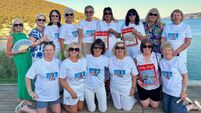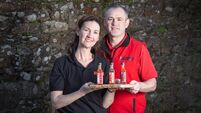New research reveals porn’s impact on teenagers

Picture stock, posed by a model.
NEARLY half (47%) of young people believe girls expect sex to involve physical aggression, according to alarming research published by the Children’s Commissioner in the UK.
The survey of 1,000 16-21 year olds in England found one in 10 children have viewed pornography aged nine, with half having seen it by the age of 13. Another 42% said they believed most girls ‘enjoy’ acts of sexual aggression.
UK Children’s Commissioner Dame Rachel de Souza said she was “deeply concerned about the normalisation of sexual violence in online pornography, and the role this plays in shaping children’s understanding of sex and relationships”. She recalled an incident where she was told by a girl who had a first kiss with her 12-year-old boyfriend that he had “strangled her” having seen it in pornography “and thought it normal”.
The report found while 38% of those surveyed said they had accidentally stumbled across porn online, half of respondents (58% of males and 42% of females) sought it out.
With regards to sexual aggression in porn, young people were significantly more likely to see violence perpetrated against a woman (65%) than against a man (29%).
In light of these worrying statistics, how can parents and carers educate children on what a healthy sexual relationship looks like, the importance of consent, and the realities of pornography?
It’s important to start the conversation around consent sooner rather than later.
“There is a misconception that if you start talking to kids about sex too young, they will want it, says GP and sexual function expert Dr Anand Patel, who works with Lovehoney (lovehoney.co.uk).
“Actually, whether parents want their children to access it or not, they will find that information.
Sex educator and coach Ruth Ramsay (ruthramsay.com) agrees: “Consent and boundaries are vital life skills children should be learning. By the time kids are ready for early sex education, it should then simply be a case of applying these lessons to sex.
“The same goes for pleasure; from their earliest days, children should develop an understanding that their bodies are something that gives them pleasure, and it’s a safe place to explore.
"As a sex educator and coach, I see way too often in my work with adults, how damaging it is to leave pleasure out of sex education.
If parents and educators aren’t talking to young people about how unrealistic porn can be, there’s a danger they’ll believe aggressive, coercive or degrading sex acts are normal.
“Porn is not intended to be sex education, but it’s the primary source of information for children and teens who are not receiving this information anywhere else,” Ramsay says.
“A metaphor I find works for both kids and adults is: you wouldn’t expect to learn to drive by watching The Fast And The Furious, and in the same way, we can’t learn how to ‘do’ sex by watching porn. Let them know its not ‘real’.”
For older generations, it was common for parents to have ‘the talk’ with then avoid speaking about the dreaded S-E-X ever again. Ramsay suggests a different approach: “There is no one ‘conversation about sex’ to have with kids at one age. It’s a topic that builds.”
Having an open dialogue and tailoring topics to your child’s age can help: “For example, as babies are growing into toddlers and learning about their bodies and names for body parts, correct names for genital anatomy should be included in a matter of fact way.
To encourage openness, try to normalise talking about what can be a difficult subject. “Making sex a shame-free topic creates the space for kids to ask questions naturally,” Ramsay says. “They may be picking up shame messages from society and other children, so reminding them, ‘Any time you want to ask me anything about sex, feel free’ is important.”
Ramsay adds: “If they ask something you don’t know the answer to, don’t be embarrassed - say you’re not sure of the answer to that, and suggest you look it up together.”







 App?
App?





